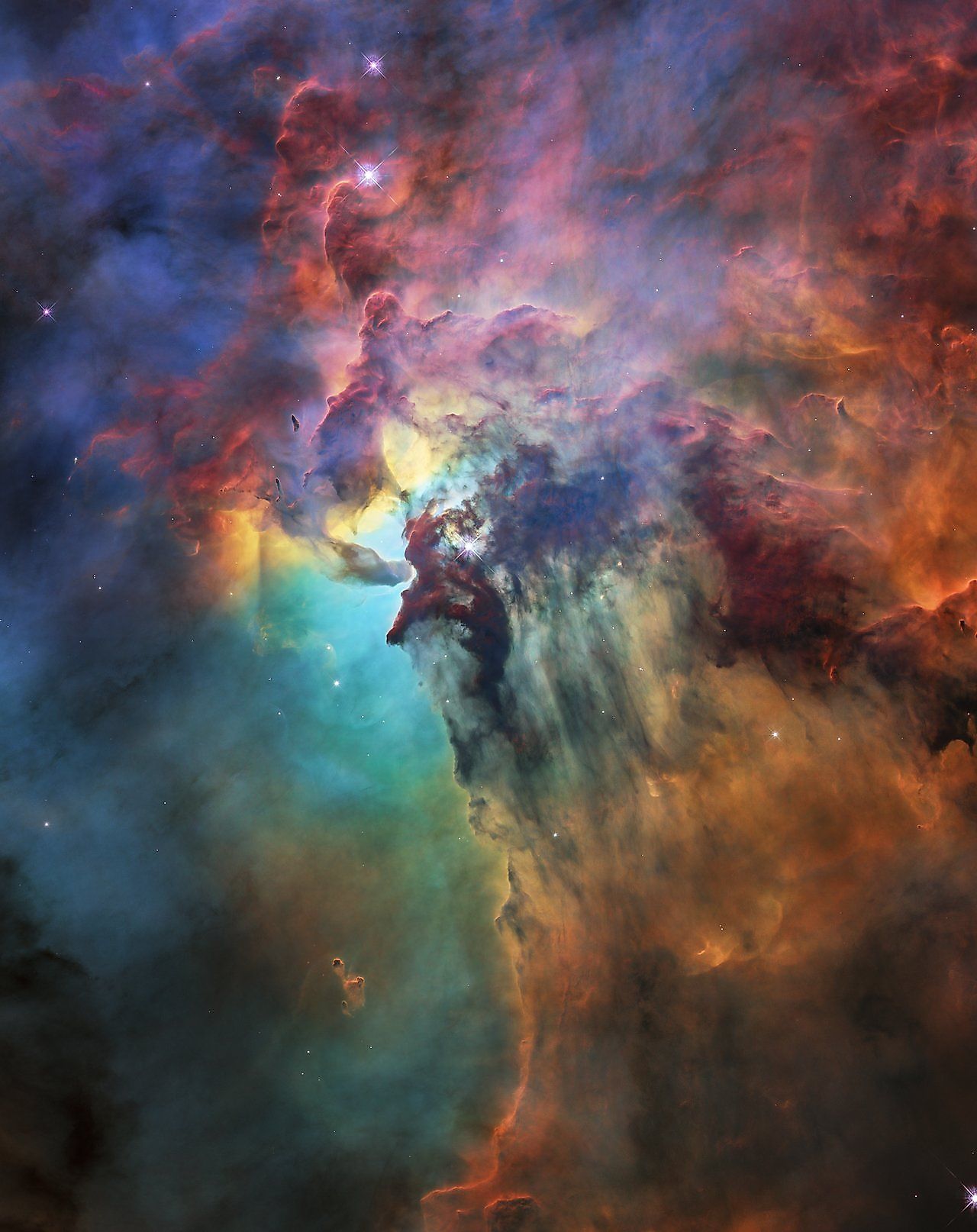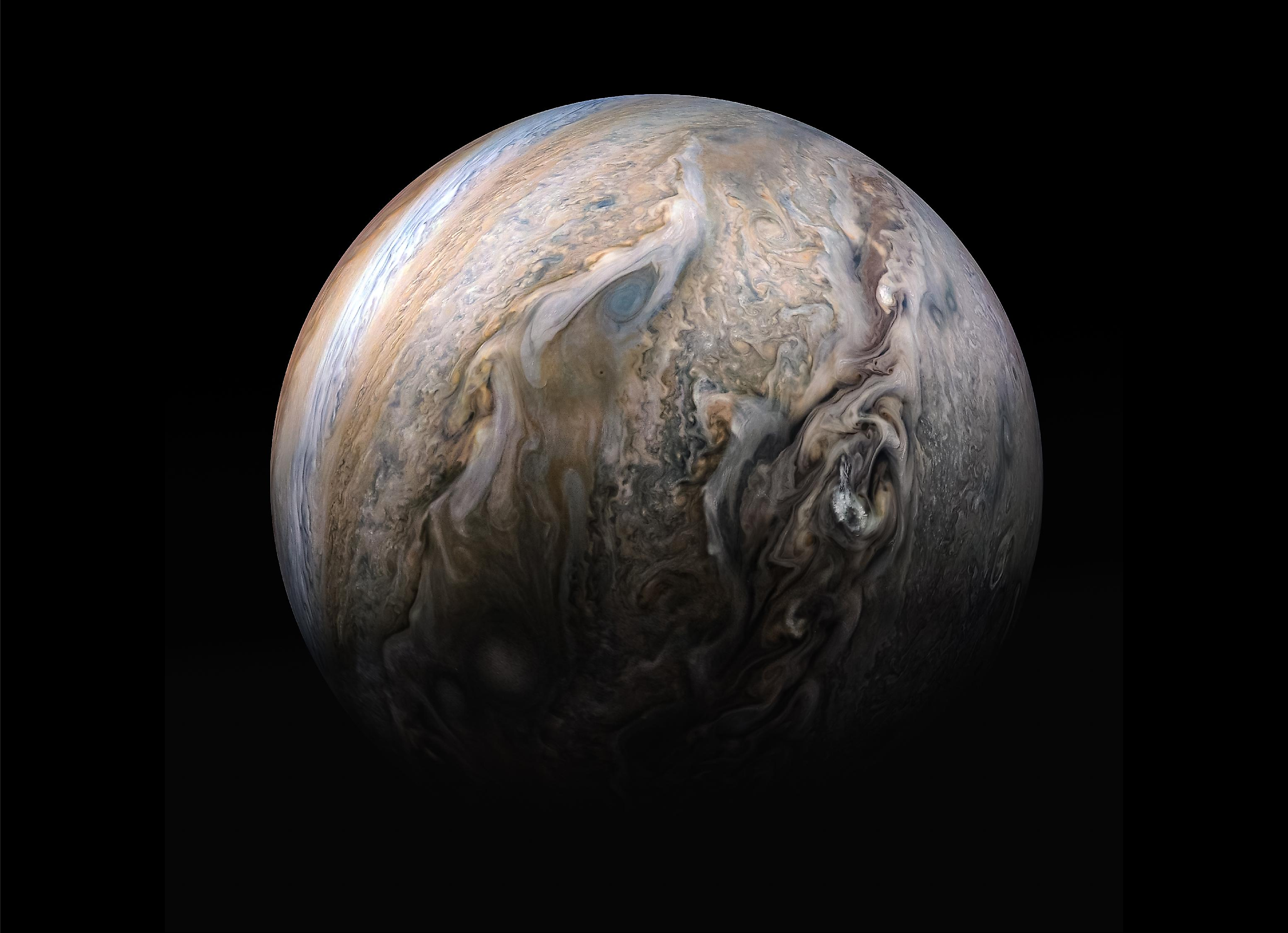
What Is The Largest Planet In The Solar System?
Jupiter is the largest planet in our solar system by size, mass, and volume. By size, Jupiter is gigantic, having a diameter of 142,800 kilometers or about 11 Earths across. In terms of volume, you could fit every other planet inside Jupiter, and there would still be space left over. Jupiter is also more than 300 times the mass of the Earth.
The Gas Giant is the fifth planet from the Sun and has not always been the same size. Positioned far from the sun, Jupiter's location allowed it to accumulate vast amounts of hydrogen and helium, the lightest and most abundant elements, fostering its growth to a gigantic scale. Discover its fascinating evolution below.
Jupiter - Diameter Of 142,800 Km (11.2 times bigger than Earth)
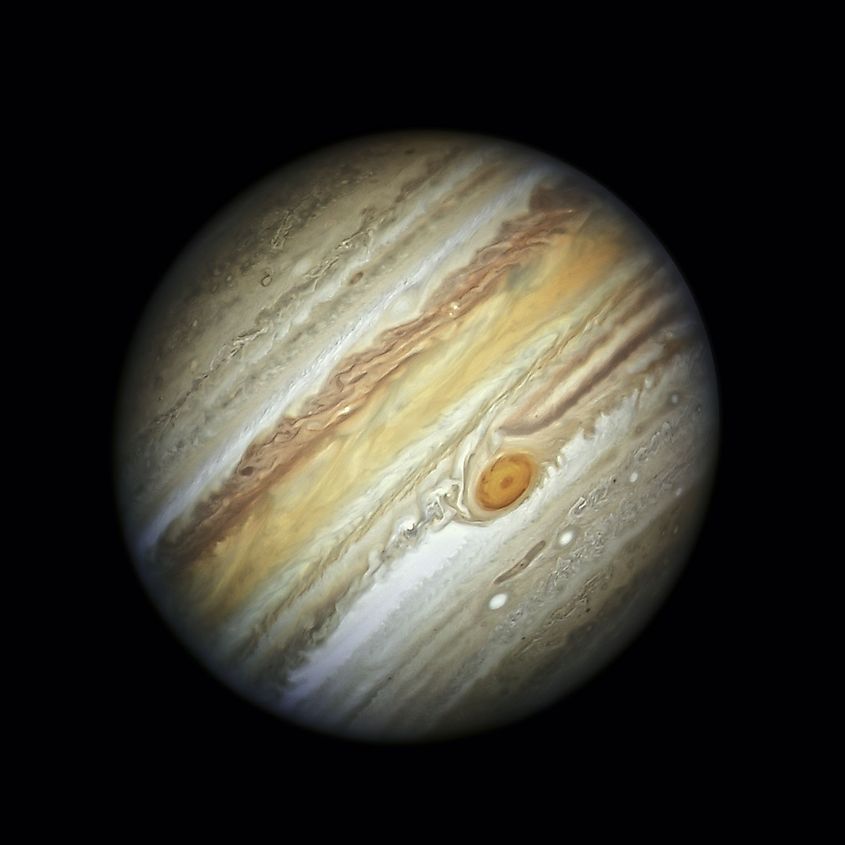
Jupiter's immense size can largely be attributed to its location in the solar system. Shortly after the Sun's formation, its energy dispersed the lighter elements, hydrogen and helium, towards the outer solar system. Being the lightest elements in the universe, hydrogen and helium were abundant in the outer regions, allowing gas giants like Jupiter to grow significantly. Composed mainly of these two elements, which make up over 90% of its mass, Jupiter not only became the largest planet but also acquired the strongest magnetic field among the planets. This magnetic field, if visible to humans, would shine as one of the brightest objects in the night sky. Moreover, Jupiter's rapid rotation rate, completing a turn on its axis every 10 hours, stretches the atmospheric gases into the distinctive long bands across its surface, contributing to its unique and recognizable appearance.
Saturn - Diameter Of 120,660 Km (9.5 times bigger than Earth)
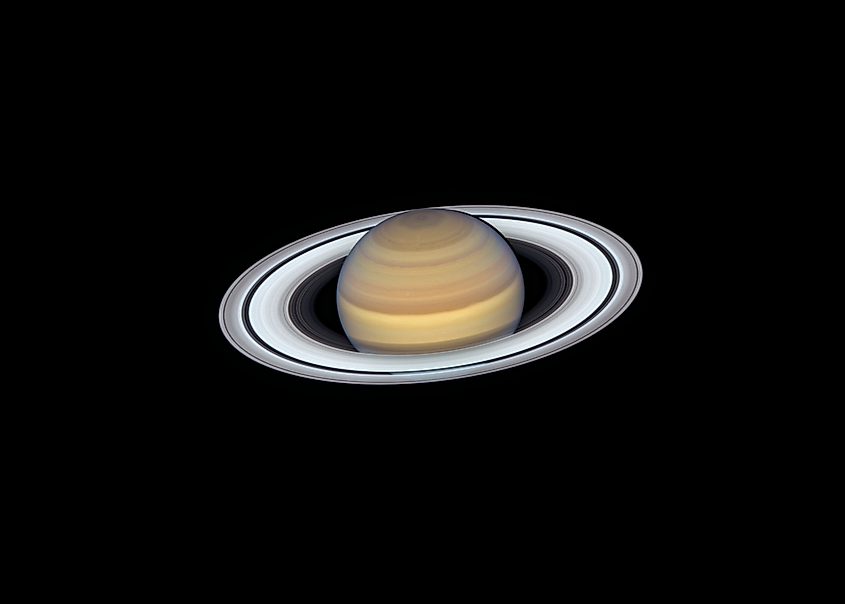
Saturn is the second-largest planet in our solar system, with a diameter of 120,660 kilometers, or about 9.5 Earths across. By volume, you could fit 764 Earths inside Saturn. By mass, Saturn is 95 times the mass of Earth.
The reasons behind Saturn becoming such a giant planet are the same as those for Jupiter. The outer solar system contained vast amounts of hydrogen and helium, allowing planets like Jupiter and Saturn to become the largest planets in the solar system. Interestingly, Jupiter and Saturn are probably the two most similar planets in the solar system. Both are composed chiefly of hydrogen and helium and are covered in large bands of gas. However, Saturn's bands are not nearly as prominent as Jupiter's. Like Jupiter, Saturn also rotates fast, completing one rotation every 11 hours. With such a quick rotation, the process by which the large bands of gas form is similar to Jupiter. However, due to Saturn's further distance from the Sun, it does not receive as much sunlight, which may contribute to how these large bands form. Furthermore, the distribution of some chemicals, such as water, ammonia, and sulfur, may also contribute to Saturn's watered-down appearance.
Uranus - Diameter Of 51,118 Km (4.0 times bigger than Earth)
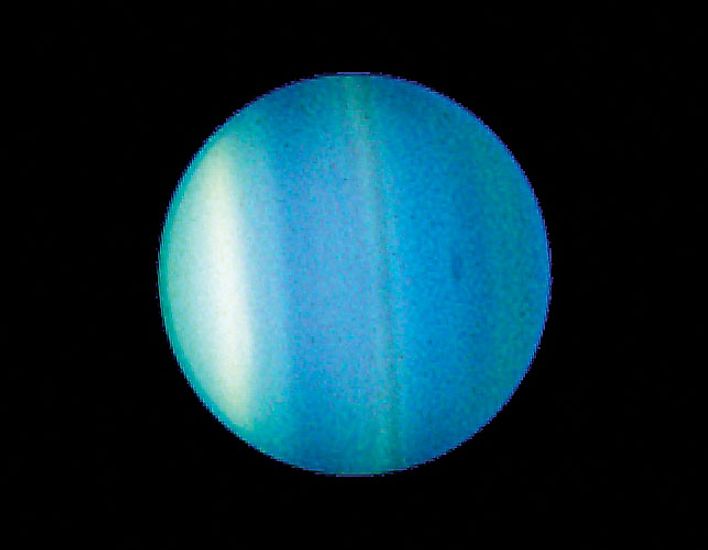
Uranus is the third-largest planet in the solar system, with a diameter of 51,118 kilometers, or about four Earths across. Despite being only four times larger than Earth, Uranus is still a massive planet at 14.5 times the mass of Earth.
Like Jupiter and Saturn, Uranus is composed mostly of hydrogen and helium. However, although Uranus is also a gas giant, it contains a much higher abundance of water, methane, and ammonia than Jupiter and Saturn. As a result, Uranus belongs to another classification of planets called ice giants. Uranus was the first planet to be discovered using a telescope. In 1781, the astronomer William Herschel discovered Uranus. Uranus has only ever been visited by a spacecraft once, the Voyager 2 flyby in the 1980s. Most of what scientists know about Uranus was discovered during Voyager 2's flyby. Unlike Jupiter and Saturn, Uranus was virtually featureless. It had no large bands spread across its atmosphere and no visible storm systems. For the most part, Uranus appeared rather dull. As it later turned out, Voyager 2 simply had bad timing. Uranus experiences seasonal changes as it orbits the Sun, and future observations from Hubble have revealed atmospheric features and storms. One of the most interesting properties of Uranus is that the entire planet is tipped on its side. Unlike the other planets, Uranus does not rotate from side to side. Instead, its axis is flipped a full 90 degrees. Visually, Uranus rolls around the Sun like a wheel.
Neptune - Diameter Of 49,528 Km (3.8 times bigger than Earth)
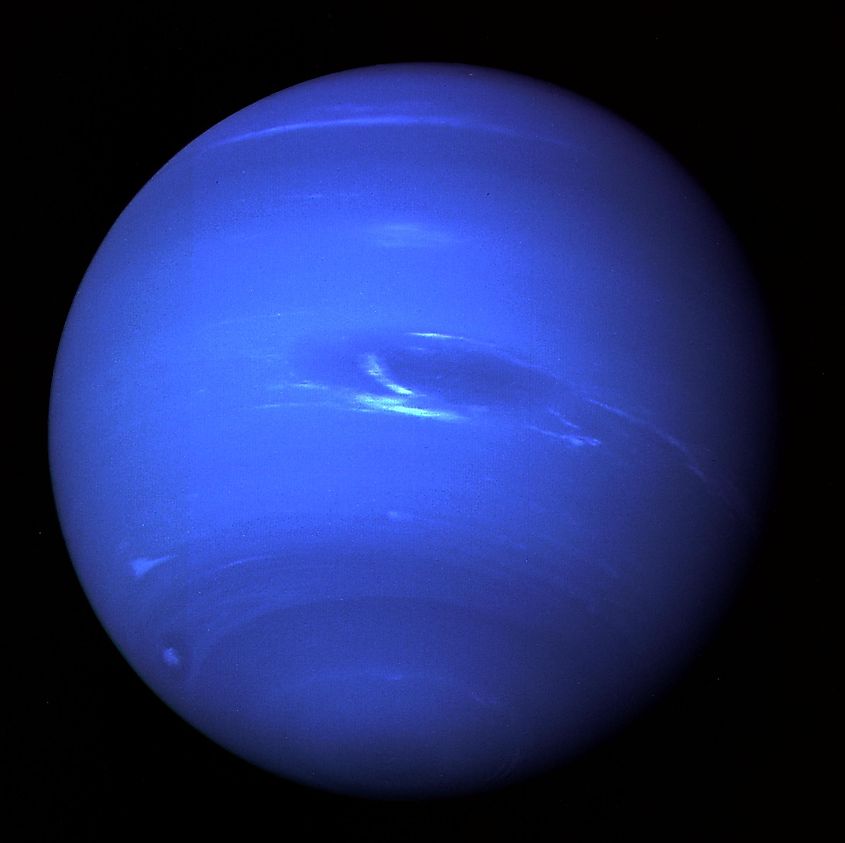
Neptune is the fourth-largest planet in the solar system, with a diameter of 49,528 kilometers, or about 3.8 Earths across. Interestingly, despite being smaller than Uranus, Neptune is more massive. Neptune has a mass seventeen times that of the Earth, while Uranus is just over 14 times as massive as Earth. Given Neptune's location in the solar system, it makes no sense why it's more massive than Uranus. Being so far from the Sun makes it unlikely that there would have been enough material for Neptune to become as huge as it is. It is generally believed that Neptune formed closer to the Sun than Uranus, and over time, the two planets swapped places due to the gravitational forces between them and the other gas giants.
Like the other three gas giants, Neptune is composed mostly of hydrogen and helium. Like Uranus, Neptune is classified as an ice giant due to its higher abundance of things like water, methane, and ammonia. Interestingly, the higher abundance of methane in Neptune's atmosphere is why the planet is so blue. The methane absorbs red light from the Sun and scatters blue light, giving Neptune its signature color.
Earth - Diameter Of 12,756 Km

Earth is the fifth-largest planet in our solar system, with a diameter of 12,756 kilometers. The Earth is the largest and heaviest of the four inner rocky worlds. The Earth is also the densest planet in the solar system. Earth's high density comes from the fact that Earth contains an abundance of heavy metals, with the core being composed mostly of iron. Earth is one of the only planets in the solar system that is geologically active, causing the surface of the Earth to change over time as the continents drift across the surface.
The Earth is the only planet in the solar system that orbits within the Sun's habitable zone. The habitable zone is the area around a star where, given the right conditions, water can exist in liquid form on a planet's surface. The Earth is nearly covered in water, with 75% of the surface being water. The existence of so much liquid water has allowed for the presence and evolution of life, and the Earth is the only world known so far to harbor life.
Venus - Diameter Of 12,104 Km (95% the size of Earth)
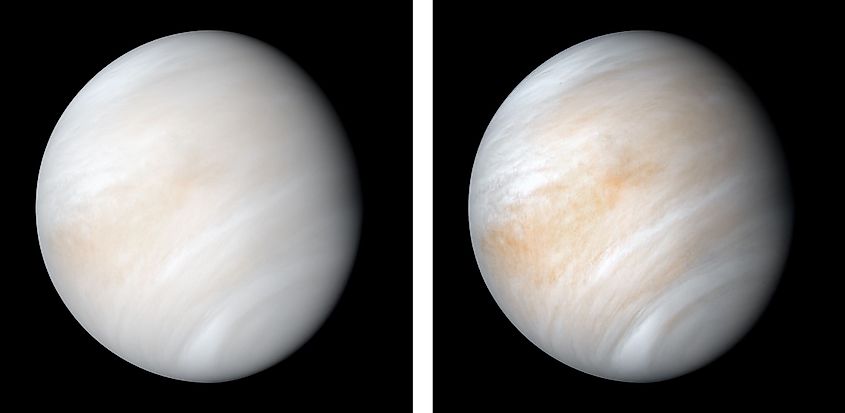
Venus is the sixth largest planet in the solar system, with a diameter of 12,104 kilometers, or about 95% the size of Earth. In terms of size and composition, Venus and Earth are very similar. Both are rocky worlds that contain an iron core. However, despite their similarities, Venus has sometimes been called Earth's "evil twin." That's because Venus does not possess the life-giving environment of the Earth. Instead, Venus is the warmest planet in the solar system, having an average surface temperature of 900 degrees Fahrenheit (475 degrees Celsius). Venus is even warmer than Mercury, despite Mercury being closer to the Sun than Venus. The high surface temperature of Venus is a result of its atmospheric composition and density. Not only is the atmosphere 90 times heavier than Earth's, but it is also 96% carbon dioxide. As a greenhouse gas, carbon dioxide traps incoming heat from the Sun and keeps it near the surface, causing temperatures on Venus to skyrocket.
Mars - Diameter Of 6,779 Km (about half the size of Earth)
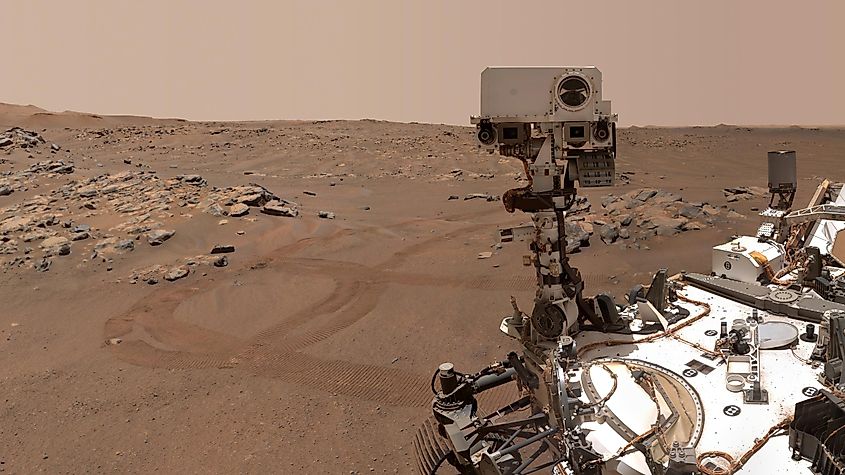
Mars is the seventh-largest planet in the solar system, with a diameter of 6,779 kilometers, or about half the size of Earth. The Earth and Mars are very similar worlds. Both are composed primarily of rock and metal, both have a 24-hour day, and Mars likely had large amounts of water on its surface in the distant past. Mars has undergone numerous changes throughout its history. It once had a thick atmosphere with large amounts of oxygen, which allowed Mars to have rivers, lakes, and even oceans of liquid water. Billions of years ago, Mars would not have looked that different from Earth. Life may have arisen on Mars, but scientists have not found any evidence of past or current forms of life on Mars.
Mercury - Diameter Of 4,849 Km (38% the size of the Earth)
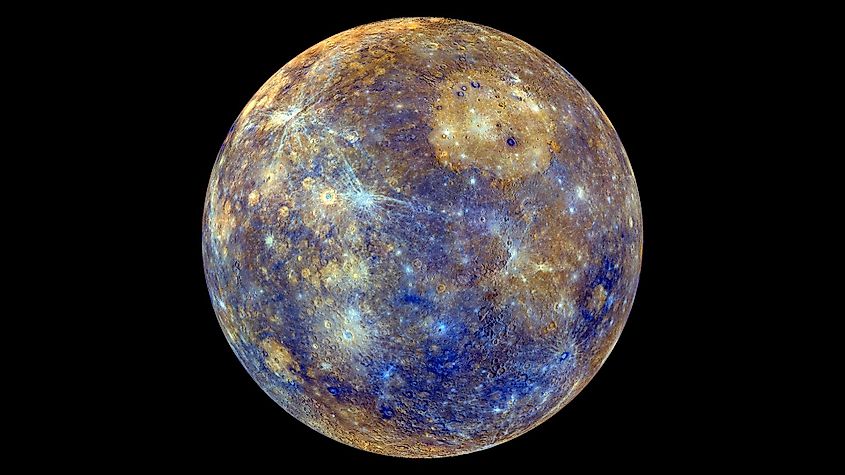
Mercury is the smallest planet in the solar system, with a diameter of 4,849 kilometers, or about 38% the size of Earth. Mercury is also the closest planet to the Sun at an average of 48 million kilometers. Being so close to the Sun, Mercury can't hold onto an atmosphere, making it difficult for Mercury to disperse the heat it receives from the Sun. The result is that Mercury experiences some of the most dramatic temperatures in the solar system. During the day, temperatures reach as high as 800 degrees Fahrenheit (450 degrees Celsius), while at night, temperatures drop as low as minus 290 degrees Fahrenheit (minus 180 degrees Celsius).
The Planets From Biggest To Smallest
| Rank | Planet | Diameter (kilometres) |
|---|---|---|
|
1 |
Jupiter |
142,800 |
|
2 |
Saturn |
120,660 |
|
3 |
Uranus |
51,118 |
|
4 |
Neptune |
49,528 |
|
5 |
Earth |
12,756 |
|
6 |
Venus |
12,104 |
|
7 |
Mars |
6,779 |
|
8 |
Mercury |
4,849 |
